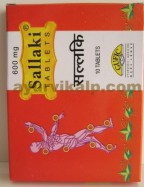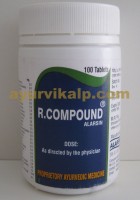Cervical spondylitis, also known as cervical spondylosis, is a degenerative condition affecting the neck’s vertebrae and intervertebral discs, leading to pain, stiffness, and reduced mobility. While conventional treatments often focus on pain relief and physical therapy, Ayurveda offers a holistic approach to managing cervical spondylitis by addressing the root causes, such as imbalances in the body’s doshas, particularly Vata.
Ayurvedic Perspective on Cervical Spondylitis
In Ayurveda, cervical spondylitis is often linked to an aggravated Vata dosha, which governs movement and the nervous system. Imbalances in Vata can lead to dryness, stiffness, and degeneration of tissues, particularly in the joints and bones. Ayurvedic treatments aim to pacify Vata, nourish the bones and nerves, and improve overall mobility.
1. Guggulu Formulations
-
Description: Guggulu (Commiphora mukul) is a resin used extensively in Ayurvedic medicine for its anti-inflammatory and rejuvenating properties.
-
Benefits: It helps reduce inflammation in the cervical region, alleviates pain, and promotes tissue regeneration.
-
Specific Formulations:
-
Yograj Guggulu: Effective in reducing Vata aggravation and relieving stiffness and pain.
-
Kaishore Guggulu: Focuses on detoxifying the body and reducing chronic inflammation.
-
Usage: Typically taken in tablet form, but should be prescribed by a qualified Ayurvedic practitioner to ensure proper dosage.
2. Rasna (Pluchea lanceolata)
-
Description: Rasna is an herb known for its potent anti-inflammatory and analgesic properties.
-
Benefits: It helps in relieving pain and stiffness associated with cervical spondylitis by reducing inflammation and improving joint mobility.
-
Usage: Rasna can be taken as a decoction, in powdered form, or as part of a medicated oil for external application.
3. Ashwagandha (Withania somnifera)
-
Description: Ashwagandha is an adaptogenic herb that supports overall strength and reduces stress on the cervical spine.
-
Benefits: It strengthens the muscles and nerves, reduces inflammation, and enhances the body's ability to cope with physical and mental stress.
-
Usage: Ashwagandha can be consumed in powder form with warm milk or water, or as a capsule.
4. Dashamoola
-
Description: Dashamoola is a traditional Ayurvedic formulation made from ten roots, known for its anti-inflammatory and pain-relieving properties.
-
Benefits: It pacifies Vata and helps in reducing pain, stiffness, and inflammation in the cervical region.
-
Usage: Dashamoola is often used in the form of a decoction or as an ingredient in medicated oils for therapeutic massage (Abhyanga).
5. Shirodhara
-
Description: Shirodhara is an Ayurvedic therapy where warm herbal oil is poured in a continuous stream over the forehead.
-
Benefits: It is highly effective in calming the nervous system, reducing stress, and alleviating symptoms related to cervical spondylitis, such as tension headaches and neck stiffness.
-
Usage: This therapy should be performed under the guidance of an experienced Ayurvedic therapist.
6. Nirgundi (Vitex negundo)
-
Description: Nirgundi is an herb known for its strong anti-inflammatory, analgesic, and muscle relaxant properties.
-
Benefits: It helps in reducing pain and inflammation in the cervical spine and is particularly effective when applied topically as an oil or poultice.
-
Usage: Nirgundi oil can be applied to the affected area, or its leaves can be used to prepare a poultice for external application.
7. Mahamash Taila
-
Description: Mahamash Taila is a medicated oil used in Ayurveda for external application, especially in conditions involving Vata aggravation.
-
Benefits: It nourishes the nerves and muscles, reduces stiffness, and improves flexibility in the cervical region.
-
Usage: The oil is gently massaged onto the neck and shoulders to relieve symptoms of cervical spondylitis. It is often used in conjunction with therapies like Abhyanga (massage) or Swedana (herbal steam therapy).
8. Kati Basti
-
Description: Kati Basti is an Ayurvedic treatment where warm medicated oil is retained on the lower back within a dough boundary, but a similar technique can be adapted for the cervical region.
-
Benefits: This therapy helps in relieving deep-seated pain, nourishes the spine, and reduces inflammation.
-
Usage: The therapy is conducted under professional supervision, where warm oil is retained over the cervical spine for a specific period, followed by a gentle massage.
Integration in the United States
As Ayurvedic medicine gains popularity in the United States, these treatments for cervical spondylitis are becoming more accessible. Ayurvedic practitioners in the U.S. tailor these treatments to suit the needs of individuals, often integrating them with modern therapies for enhanced outcomes. The use of Ayurvedic medicines and therapies, like Guggulu formulations, Shirodhara, and medicated oils, offers a natural and holistic alternative for managing cervical spondylitis.
Regulatory Considerations
In the U.S., Ayurvedic treatments are considered complementary and alternative medicine. Ayurvedic products are regulated as dietary supplements by the FDA, meaning they are not subjected to the same testing as conventional medications. It is crucial for consumers to consult with licensed practitioners and purchase Ayurvedic products from reputable sources to ensure quality and safety.
By incorporating Ayurvedic treatments into their healthcare regimen, individuals in the U.S. can manage cervical spondylitis naturally, focusing on long-term relief and overall well-being.











